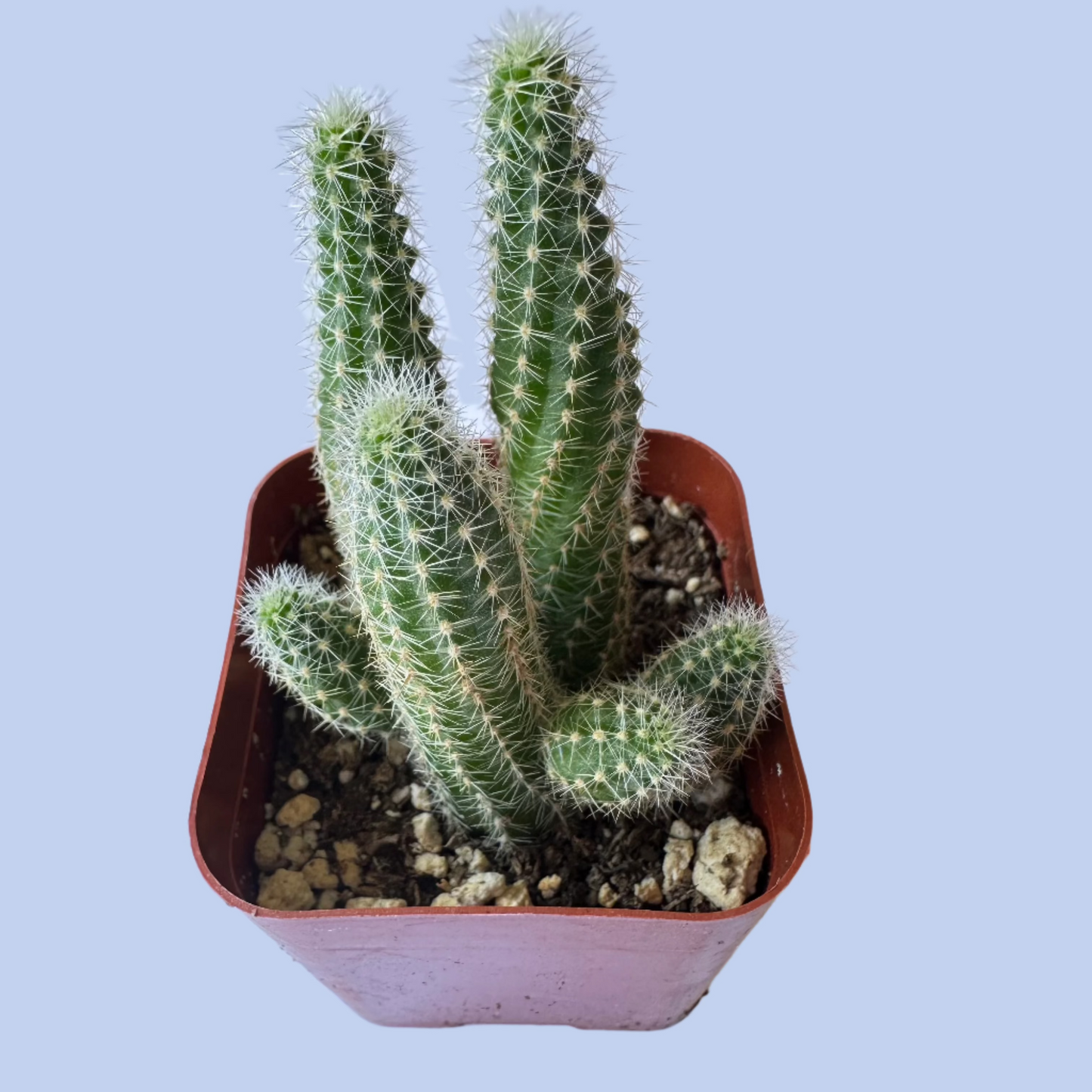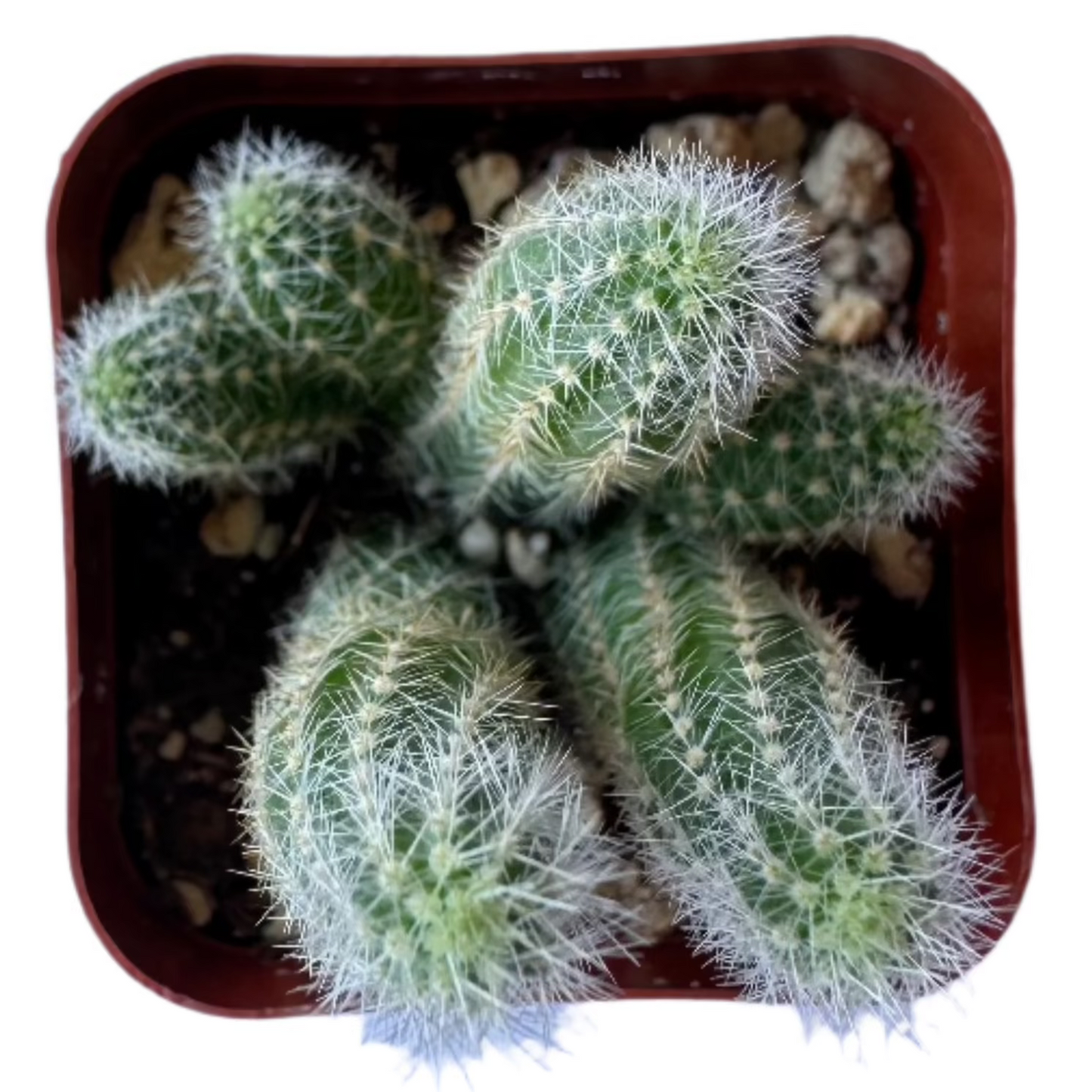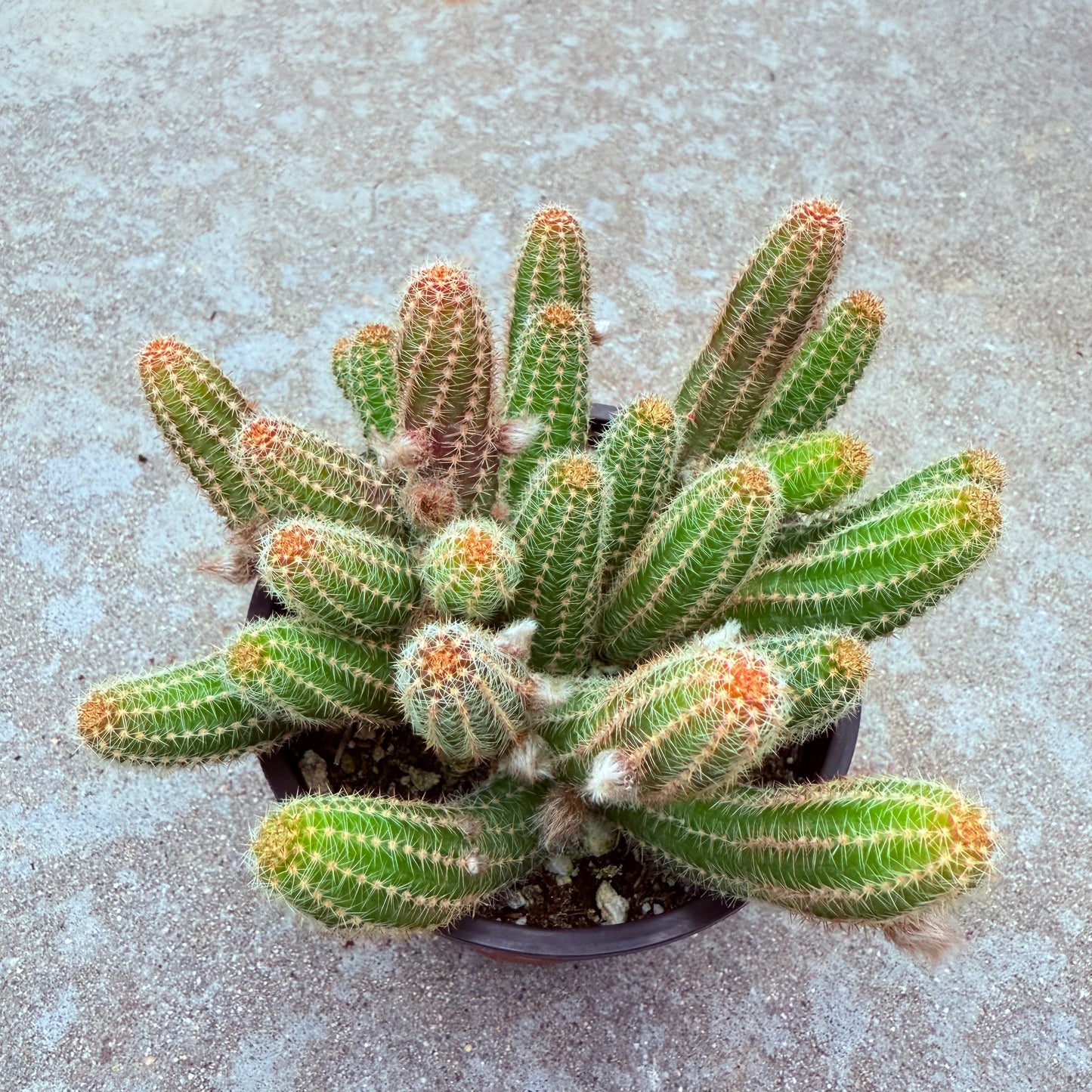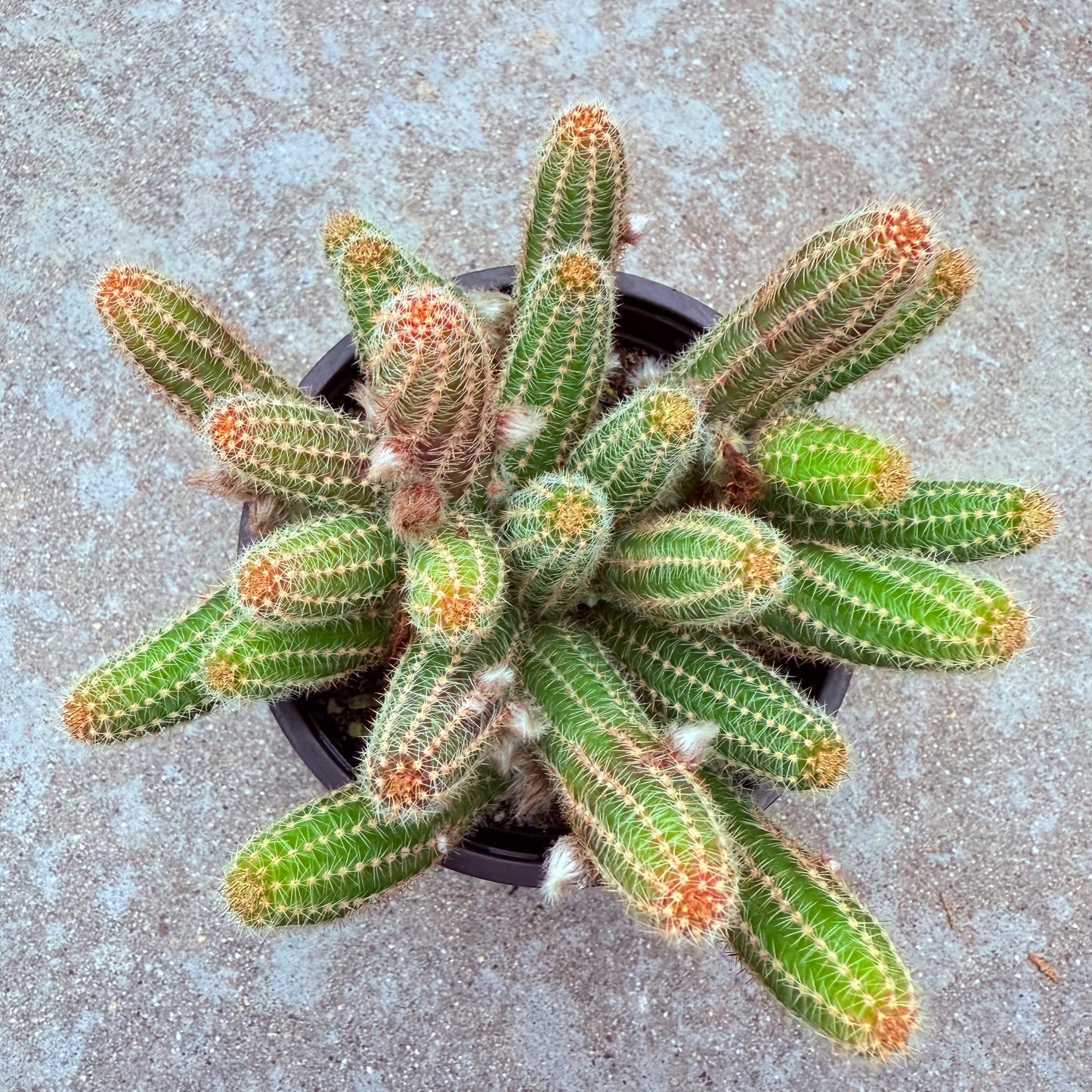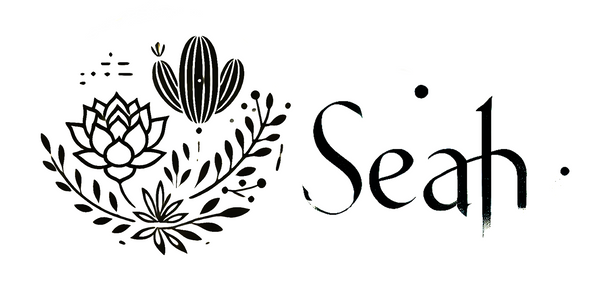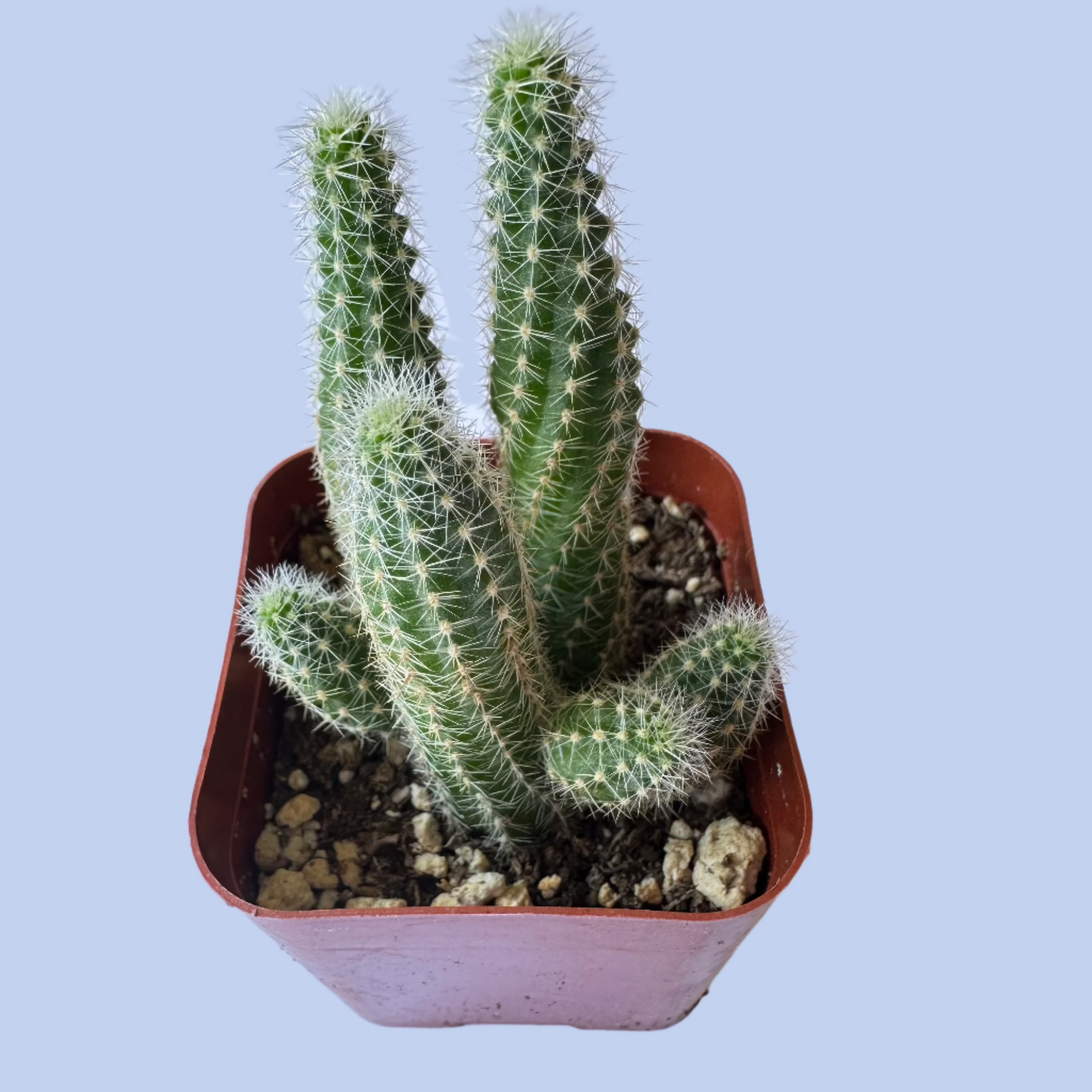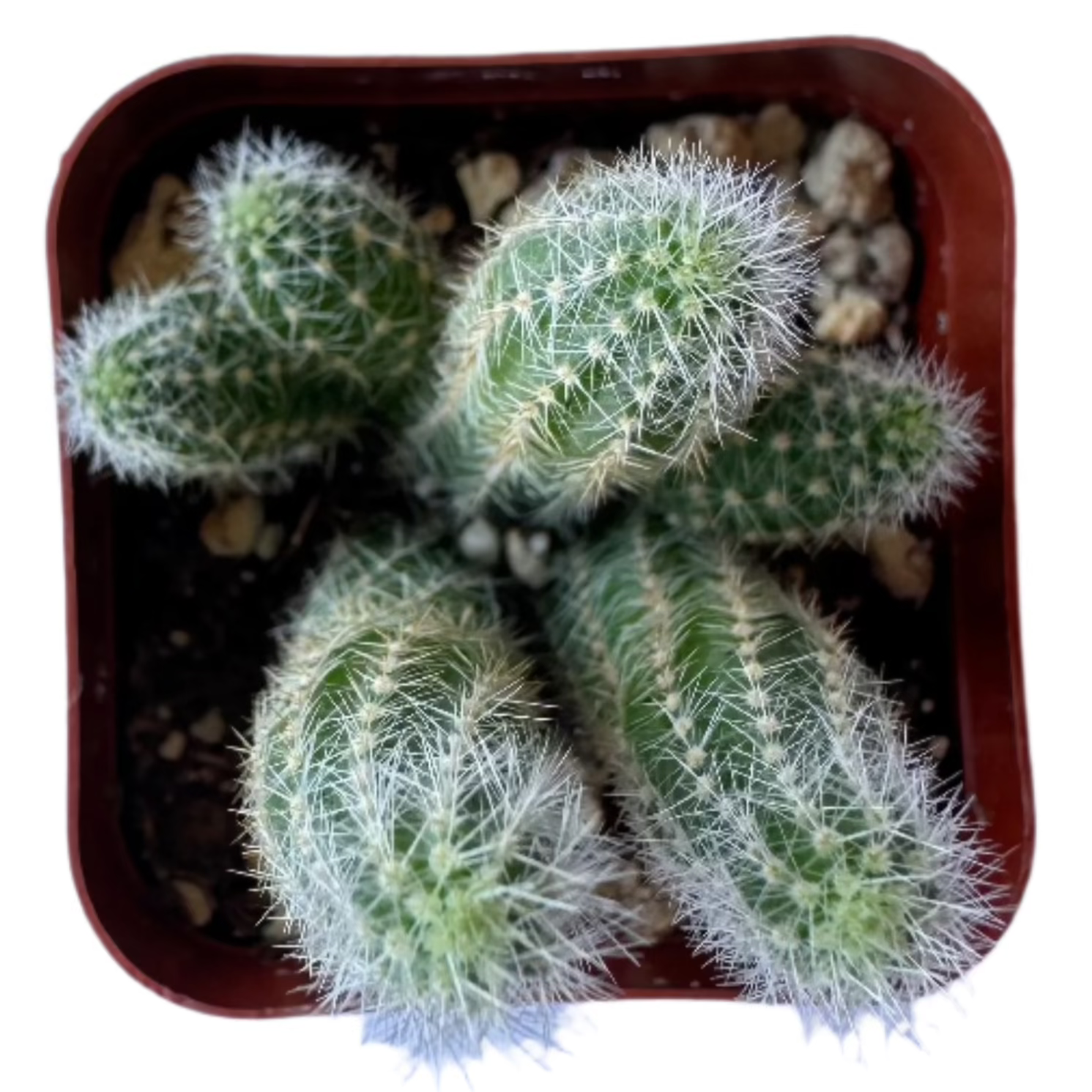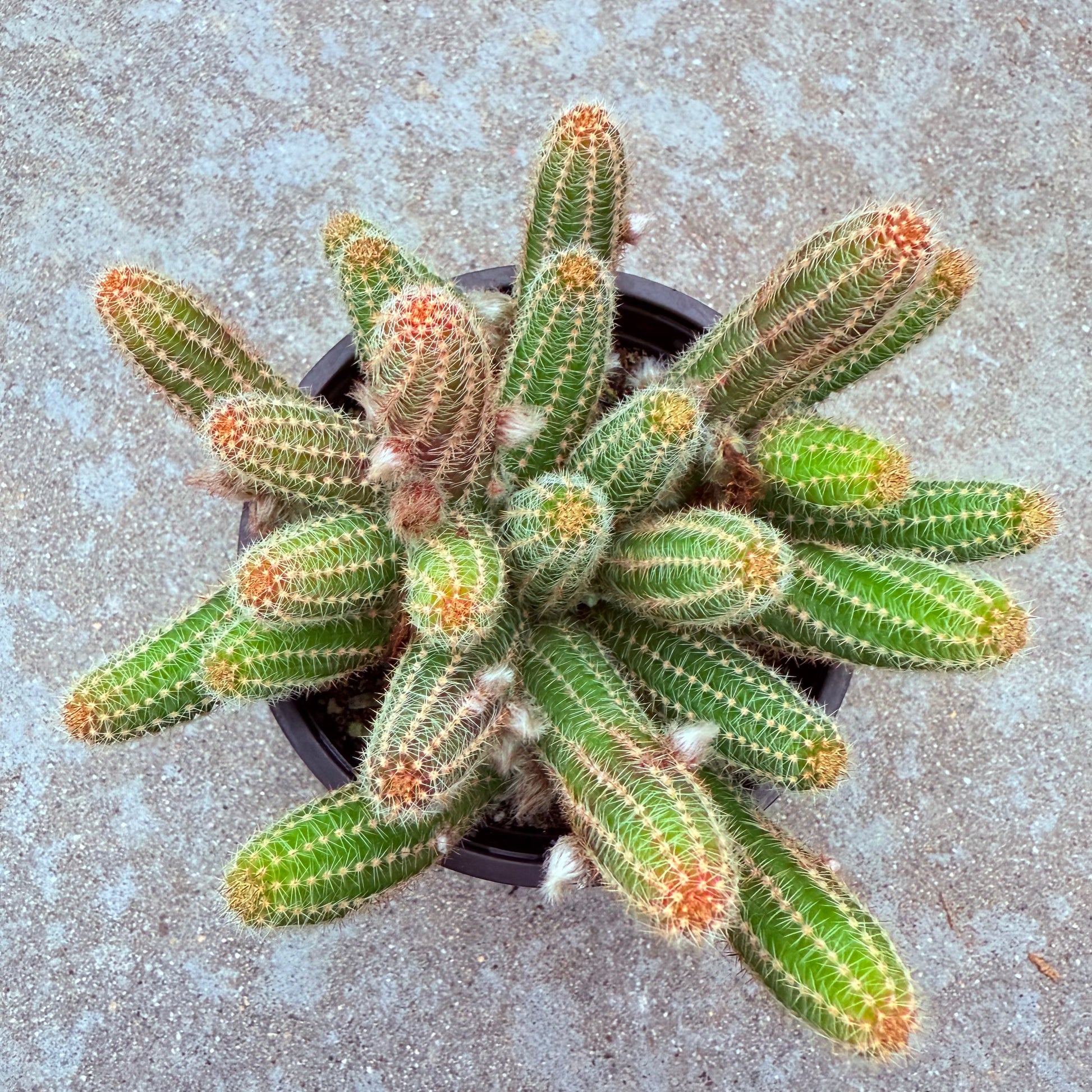Echinopsis Chamaecereus - Peanut Cactus
Echinopsis Chamaecereus - Peanut Cactus
In stock
Couldn't load pickup availability
📝 Description
Morphological Characteristics
Echinopsis chamaecereus, commonly known as the Peanut Cactus, is a small, clumping cactus species belonging to the Cactaceae family. Native to the mountainous regions of Argentina, this plant is characterized by its numerous slender, finger-like stems that resemble peanuts, hence its common name. The stems are green to bluish-green, typically reaching up to 10 cm (4 inches) in length and about 1-2 cm (0.4-0.8 inches) in diameter. They have 8-10 ribs with small, rounded tubercles.
Along the ribs, the areoles bear short, soft, white to yellowish spines that are generally harmless to touch, giving the plant a fuzzy appearance. During the blooming season, usually in late spring to early summer, the Peanut Cactus produces large, vibrant, funnel-shaped flowers. The flowers are typically bright orange to red-orange and can be up to 5 cm (2 inches) in diameter, creating a striking contrast against the green stems.
Growth Habits
Echinopsis chamaecereus is a fast-growing, low-growing cactus that forms dense mats or clumps over time as it produces numerous offsets. The plant spreads horizontally, making it an excellent ground cover in suitable climates or an attractive specimen in hanging baskets and containers. It is adapted to cooler, high-altitude environments but can thrive in a variety of conditions when provided with proper care.
Maintenance Points
• Lighting: The Peanut Cactus prefers bright, indirect sunlight to partial shade. It can tolerate some direct sunlight, especially in the morning or late afternoon, but intense midday sun may cause sunburn or yellowing of the stems. Providing adequate light encourages healthy growth and abundant flowering.
• Watering: As a cactus, it requires minimal watering. During the growing season (spring and summer), water thoroughly when the soil has completely dried out. In the dormant season (fall and winter), reduce watering frequency significantly. Overwatering can lead to root rot and other fungal diseases.
• Soil: Use a well-draining cactus or succulent potting mix. Incorporating coarse sand, perlite, or pumice can improve drainage and aeration, mimicking the plant’s natural habitat.
• Temperature: Ideal temperatures range between 15-24°C (59-75°F). The Peanut Cactus is relatively cold-tolerant for a cactus and can withstand temperatures down to -7°C (20°F) for short periods if kept dry. However, prolonged exposure to freezing temperatures should be avoided. In colder climates, it is best grown indoors or moved inside during winter.
• Fertilization: Feed sparingly during the growing season with a diluted, low-nitrogen, water-soluble fertilizer formulated for cacti and succulents. Apply fertilizer once a month. Avoid fertilizing during the dormant season.
• Potting: When grown in containers, ensure the pot has adequate drainage holes to prevent water accumulation. Repotting is recommended every 2-3 years in spring or when the plant has outgrown its container.
• Humidity: The Peanut Cactus prefers low to moderate humidity. Good air circulation helps prevent fungal issues.
Reproduction Method
Echinopsis chamaecereus can be easily propagated through stem cuttings (offsets) and seeds.
1. Stem Cuttings (Offsets):
• Selection: Gently remove offsets or stem segments from the parent plant by twisting or cutting with a clean, sharp knife.
• Callusing: Allow the cuttings to dry and callus over for a few days in a shaded, dry area to prevent rot upon planting.
• Planting: Place the callused end into well-draining cactus soil mix. Insert the cutting just enough to support it upright.
• Aftercare: Keep the soil slightly moist but not wet. Place the pot in a warm area with bright, indirect light. Roots should develop within a few weeks, after which normal care can be resumed.
2. Seeds:
• Sowing: Sow seeds on the surface of a well-draining, sterile cactus seed mix. Lightly cover with a thin layer of sand or perlite.
• Germination: Maintain consistent moisture (but not waterlogged conditions) and provide bright, indirect light. Covering the container with a transparent lid or plastic wrap can help retain humidity.
• Temperature: Keep the temperature between 20-25°C (68-77°F) to promote germination, which may take several weeks.
• Transplanting: Once seedlings are large enough to handle, they can be transplanted into individual pots with appropriate cactus soil mix.
Additional Tips
• Pest Control: Monitor for common pests such as mealybugs, spider mites, and scale insects. If infestations occur, treat promptly with insecticidal soap or neem oil.
• Disease Prevention: Ensure proper watering practices and good air circulation to prevent fungal diseases. Avoid overhead watering.
• Pruning: Remove any dead or shriveled stems to maintain the plant’s appearance and health. Use clean tools to prevent disease transmission.
• Flowering Encouragement: To promote flowering, provide the plant with a cooler, dry rest period during winter months by reducing watering and maintaining temperatures around 10-15°C (50-59°F).
• Safety Note: While the spines are generally soft, handling the plant with care is advised. Some individuals may experience skin irritation from contact with the plant’s sap.
By providing appropriate care, the Peanut Cactus can be a delightful and low-maintenance addition to your cactus or succulent collection, offering unique texture and vibrant blooms that enhance any indoor or outdoor garden space.
🌿 Care Tips
Plant Care
Light
Water
Soil
Temperature
🌟 Note: It’s normal for succulents to appear slightly shriveled after shipping. They usually recover within a few days in a suitable environment.
📦 Shipping Info
Seah Shipping Policy
Effective Date: November 2025
This Shipping Policy applies to orders delivered within the continental United States (the lower 48 states). By purchasing from Seah, you agree to the terms below.
1) Shipping Cost & Free Shipping
- Automatic rate calculation: Shipping is calculated at checkout based on weight, destination ZIP and carrier rates.
- Free Standard Shipping: Orders $59+ (pre-tax, after discounts) ship free to the lower 48 states.
- Alaska, Hawaii, Puerto Rico & other territories: Not eligible for free shipping or standard flat offers at this time.
- Taxes/Duties: Applicable sales tax and any fees are shown at checkout.
2) Processing Schedule
- Business days only: We process and ship Monday–Friday. No shipping on weekends or U.S. federal holidays.
- Handling time: 1–3 business days after payment confirmation.
- Cut-off time: Orders placed before 3:00 PM (PST) are prioritized for same-day processing; others roll to the next business day.
- Changes/Cancellations: Email support@seah.co within 12 hours of purchase; after that, the order may already be in processing.
3) Transit Times
| Method | Estimated Transit | Total ETA (Handling + Transit) |
|---|---|---|
| Standard | 5–8 business days | 6–11 business days |
| Express | 3–4 business days | 4–7 business days |
ETAs are estimates. Weather, holidays, carrier delays or high-volume periods may extend delivery times.
4) Seasonal Temperature & Plant Safety
- Winter (Nov–Mar): We strongly recommend adding a heat pack at checkout to protect plants from freezing. Orders shipped without a heat pack during cold conditions are not covered for cold damage.
- Summer heat: During extreme heat waves, we may hold shipments until temperatures normalize. We’ll notify you if there’s a hold.
- Packaging: Plants are carefully packed (bare-root or potted by type/size) to minimize transit stress.
5) Carriers & Tracking
- We ship via USPS / UPS / FedEx, selected automatically for best service to your address.
- When your order ships, you’ll receive a tracking email. Tracking typically activates within 24 hours.
- If you haven’t received tracking within 3 business days, contact us at support@seah.co or +1 (626)-999-1314.
6) Address Changes & Delivery Issues
- Before shipment: Request address changes within 12 hours of ordering.
- After shipment: We can’t modify the address once dispatched. Please contact the carrier for redirection options.
- PO Boxes: Supported for USPS only; UPS/FedEx require a street address.
- Seah isn’t responsible for delays or loss due to incorrect addresses provided at checkout.
7) Service Area
We currently ship to the continental U.S. (lower 48 states). Orders to AK/HI/PR and other territories are not eligible for free shipping and may be restricted.
8) Support
- Hours: Mon–Fri, 9:00 AM – 5:00 PM (PST)
- Phone: +1 (626)-999-1314
- Email: support@seah.co
- Address: 7870 Margaux Pl, Rancho Cucamonga, CA 91739, United States
Thank you for supporting our California nursery—each plant is hand-selected and packed with care. 🌱
